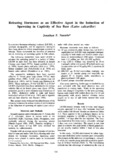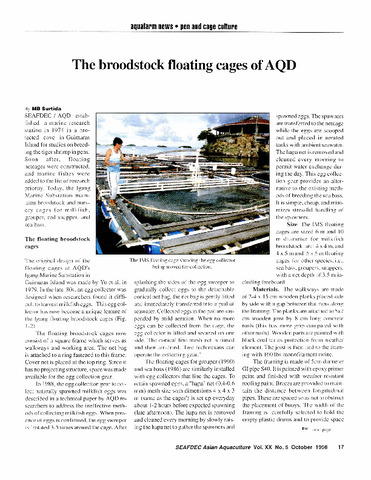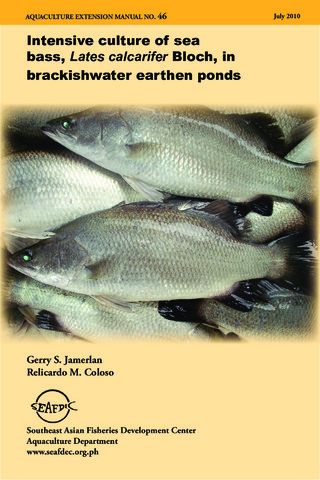Releasing hormones as an effective agent in the induction of spawning in captivity of sea bass (Lates calcarifer)
- Global styles
- MLA
- Vancouver
- Elsevier - Harvard
- APA
- Help

閲覧/開く
日付
1987Page views
2,151ASFA keyword
AGROVOC keyword
Taxonomic term
Metadata
アイテムの詳細レコードを表示する
Share
抄録
A study was conducted to evaluate the effectiveness of luteinising-hormone releasing hormones in the induction of spawning of Lates calcarifer using different administration techniques: pellet implantation, Chinese analogue and osmotic pump implantation.
Suggested Citation
Nacario, J. F. (1987). Releasing hormones as an effective agent in the induction of spawning in captivity of sea bass (Lates calcarifer). In J. Copland & D. Grey (Eds.), Management of Wild and Cultured Sea Bass/Barramundi (Lates calcarifer): proceedings of an International Workshop held at Darwin, N.T., Australia, 24-30 September 1986 (pp. 126–128). Canberra, Australia: Australian Centre for International Agricultural Research.
Type
Conference paperCollections
- Conference Proceedings [299]
Related items
Showing items related by title, author, creator and subject.
-
The broodstock floating cages of AQD
Surtida, Marilyn B. (Aquaculture Department, Southeast Asian Fisheries Development Center, 1998) -
Sea bass, groupers and snappers
Duray, Marietta N. (Aquaculture Department, Southeast Asian Fisheries Development Center, 1994)Studies on sea bass (Lates calcarifer) broodstock were directed at techniques to maximize egg production. Now known are the: optimum luteinizing hormone releasing hormone analogue (LHRHa) dose range to induce spawning, ... -
Series: Aquaculture extension manual; No. 46
Intensive culture of sea bass, Lates calcarifer Bloch, in brackishwater earthen ponds
Jamerlan, Gerry S.; Coloso, Relicardo M. (Aquaculture Department, Southeast Asian Fisheries Development Center, 2010)An extension manual describing criteria for site selection, monoculture and polyculture operations including feeds and feeding, harvest, common diseases, economic analysis.





